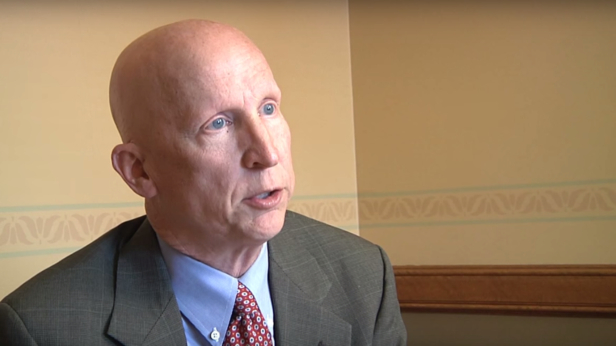
August 24, 2015
by Sen. Duey Stroebel (R-Saukville)
Guest Perspective for the MacIver Institute
In the world of government, there are many acronyms, and more and more we are hearing about a government acronym called TIF. TIF stands for tax incremental financing. TIF was designed as an economic development tool and has been around for many years.
When successful, TIF generally works in the following manner– first, a specific area is designated as a TIF district. Then, the municipality makes infrastructure enhancements and/or provides developer incentives with the express purpose of financially subsidizing new development in the district. Many times the subsidy is funded through borrowing money in the form of a bond. The expected increased property tax revenues generated from the new development in the district are used to pay for the financial subsidy.
Therefore, none of the increased property tax revenues flow in the normal manner to the municipality, county, K-12 school district or technical college during the life of district, usually 20 to 27 years.
I am not in opposition to TIF–it is a valuable economic development tool. My concern is the overuse and abuse of the tool in today’s environment will give TIF a black eye. As last session’s chair of the State and Local Finance Committee in the Wisconsin State Assembly, I saw numerous TIF districts whose failure had risen to the level of needing special dispensation from the state.
Every time I encountered one, I wondered what the decision makers responsible for the messes were thinking. An unneeded public subsidy is crony capitalism with the government picking winners and losers. The free market must determine the ultimate viability of a real estate development.
Initially, TIF districts were used as a mechanism to redevelop blighted or environmentally tainted areas. Many of the properties within TIF districts had a negative value prior to the redevelopment, so they generated little, if any, property tax revenue. To assist these properties develop and generate property tax revenue, municipalities borrowed money to generate funds to eliminate the blight or clean the property, thus making the property viable for redevelopment.
Usage of TIF required passing the “but for” test–i.e. “but for” the TIF, the development of the property would not be possible. TIF allowed these properties to return to the tax rolls, oftentimes enhance economic development and, most importantly, benefit all taxpayers affected by the district.
Fast forward to today. In the current environment, it is often difficult to find new real estate development that does not include a TIF subsidy. Encouraged by the beneficiaries of TIF, such as property owners, developers, eager municipal financial consultants and accommodating bond houses, municipalities are subsidizing private development that in many cases is unnecessarily lining the pockets of the aforementioned stakeholders.
All this comes at the expense of the taxpayers the policy is intended to benefit. The disturbing trend is the proliferation of TIF beyond the original “but for” concept.
Today’s levy limit environment further complicates this troubling trend. To control Wisconsin’s high property taxes, levy limits have been imposed on local municipalities. Virtually the only way to increase local tax revenues is through new construction. Unfortunately and frequently, new development is incentivized to occur in TIF districts where all revenues are diverted from local government coffers. The problem is self-evident– there are no increases in revenues to offset the inevitable fiscal demands of the new development on local governments affected by the TIF districts.
As someone with private sector experience in the field of real estate development, I understand the benefit of TIF districts and agree with the original intent. The original intent of a TIF district was to benefit local taxpayers.
Unfortunately, manipulation often occurs that forestalls or even destroys that benefit, even in successful TIF districts. Instead of quickly paying off the underlying debt of a TIF district, too often TIF revenues are directed to supporting additional TIF expenditures or subsidizing another TIF in the community that is failing.
Defenders of taxpayers must curtail unnecessary TIF districts, enhance the viability of appropriate TIF districts and ensure TIF districts benefit all taxpayers, not just special interests.
Stroebel represents Wisconsin’s 20th Senate District.